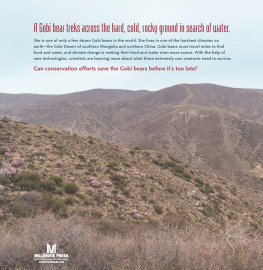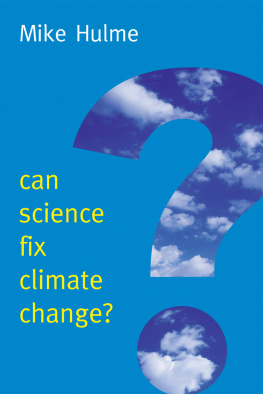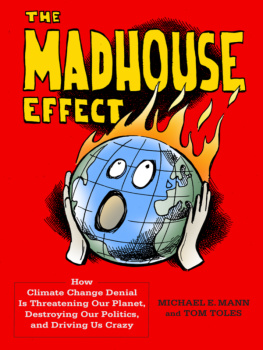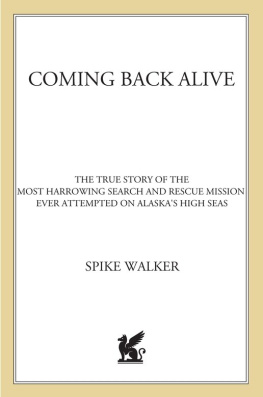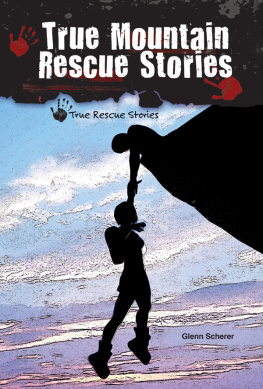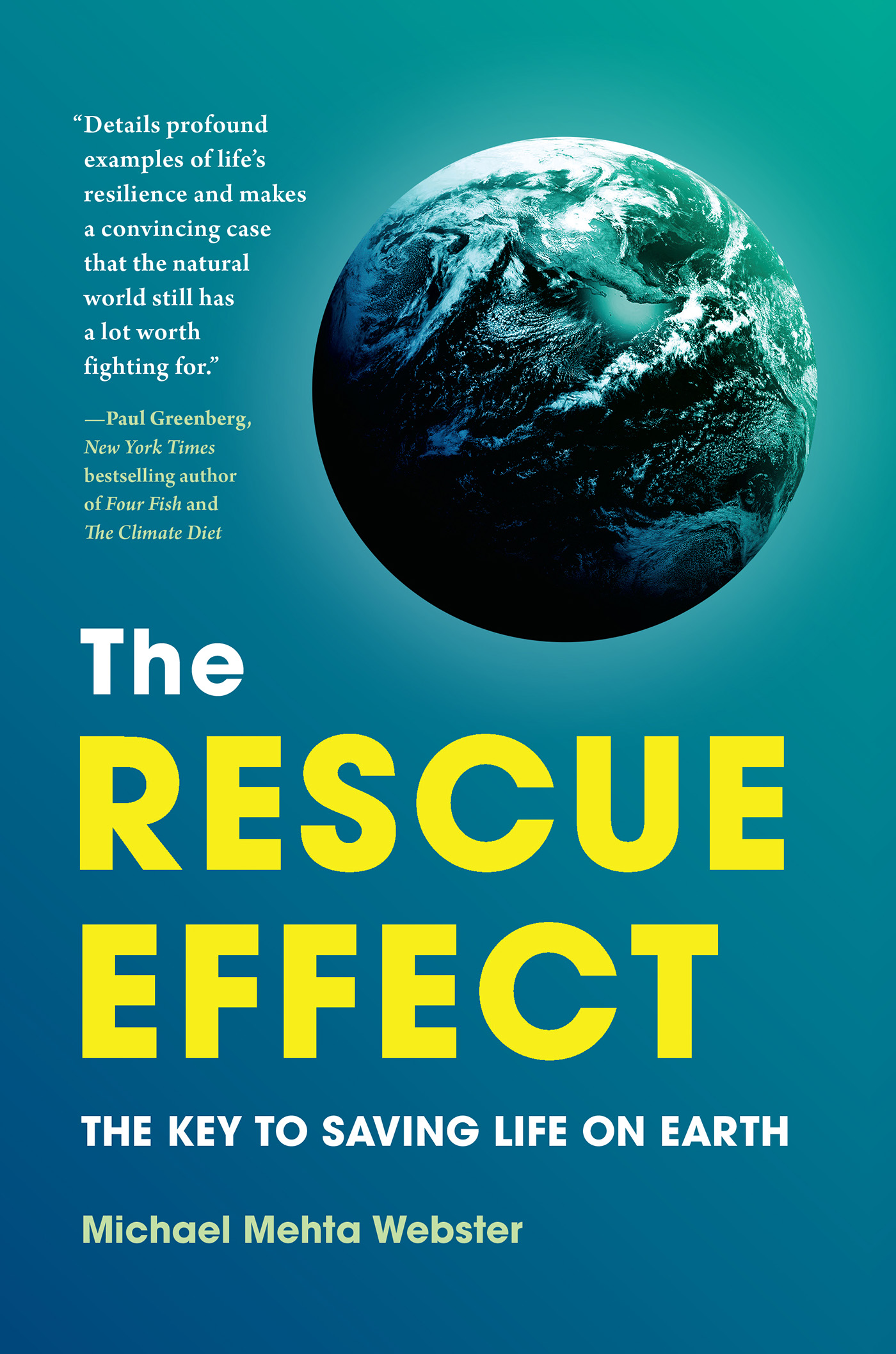Contents
Guide
Page List
Further Praise for The Rescue Effect
Websters piercing intelligence and long experience in the field has given us a new lens with which to frame conservation. His perspectives will be counterintuitive for some, but also give reason for guarded optimism in a planet undergoing accelerating change.
Charles Conn, co-author of Bulletproof Problem Solving
A riveting exploration of nature and the tough choices facing people about the future of life on Earth. Ultimately, The Rescue Effect illustrates why we should take heart in our knowledge that nature can rescue life from extinctionif we give it a chance. It is a bold challenge to the way we have approached conservation of biodiversity.
Daniel Schindler, professor at the School of Aquatic and Fishery Sciences at the University of Washington
Is mass extinction inevitable? Webster confronts that question by exploring the many ways in which plants and animals can be rescued orit turns outrescue themselves from human dominance. An uplifting and engaging book pointing to ecology and evolutionary biology as a foundation for guiding conservation efforts.
Clifford Kraft, professor at the Department of Natural Resources and the Environment at Cornell University
The Rescue Effect is an antidote to the paralyzing sense of helplessness that can overwhelm us when we face up to the stark realities of the interlinked biodiversity and climate crises. It offers a hopeful reminder of natures powerful capacity to adapt, but also forces us to take ownership of the increasingly uncomfortable choices we may need to make as we continue to push nature toward the limits of what it can do on its own.
Aileen Lee, chief of programs, Environmental Conservation, at the Gordon and Betty Moore Foundation

The
Rescue
Effect
The Key To Saving Life On Earth
Michael Mehta Webster
Timber Press
Portland, Oregon
To Avani, for
believing in me.
Contents
Introduction
On 20 February 2016, Tropical Cyclone Winston became the most intense cyclone ever measured in the Southern Hemisphere as it passed near the island of Namenalala, Fiji, devastating the islands surrounding coral reefs. Winstons winds, with gusts estimated to be as high as 225 miles per hour (360 kmph), generated waves four stories high, which shattered fragile coral fingers and steamrolled the reef with dislodged coral boulders. Wind, waves, and rain stirred up sediments underwater and eroded the nearby islands, which then flooded the reef with silt and pollution.
Exactly four years later, on an unusually calm day, I arrived at Namenalala by boat. I had been working to save coral reefs for years and knew of countless examples of reefs that were struggling to recover after natural calamities such as cyclones. Undisturbed reefs are typically covered with shrub-sized corals that aggressively compete for access to the sunlight they need in order to thrive. In the same way that trees build the forest, these corals build the reef, providing homes to untold numbers of sea creatures. When the corals disappear, the whole ecosystem shifts. A healthy reef that was once bustling with movement, color, and noise in every directionlike a marine version of Manhattans Times Squarebecomes empty, dull, and quiet, like the industrial district of a declining city.
As I snorkeled to the edge of the islands fringing reef, I saw a thicket of small, young corals that ranged from the size of lemons to cantaloupes. It reminded me of a forest that is recovering after being logged, with densely packed young trees scrambling to outgrow one another to hold their places in the light. This reef was unmistakably returningand swiftly for a coral reefto its prestorm state.
Why were these corals coming back so quickly? Namenalalas reefs were being seeded by baby corals that drifted in from nearby reefs that were spared the cyclones devastation. This process of one reef being rescued by others is an example of what I call the rescue effect. More broadly, the rescue effect is natures innate ability to help groups of organisms persist during hard times. Like a thermostat starting the air conditioning when a room gets too warm, the rescue effect automatically turns on when a population is stressed or declining.
In total, at least six different processes contribute to the rescue effect.
- Demographic rescue occurs when new individuals immigrate to a small population of organismslike the baby corals that drifted in to rescue Namenalalas reefsto provide a numerical boost of organisms that prevents them from going extinct.
- Reproductive rescue occurs when the group of organisms reproduction and survival rates increase in uncrowded conditions, which increases the population size. Reproductive rescue often takes the form of a baby boom that happens when small populations experience low competition with one another for resources such as food and space.
- Genetic rescue occurs when immigrants bring new genetic diversity to a small population, helping it overcome genetic disorders.
- Phenotypic rescue occurs when an organism adjusts its physiology, outward appearance, or behaviorcollectively, its phenotypeto cope successfully with changing environmental conditions.
- Geographic rescue occurs when a species successfully relocates to a new geographic location after environmental changes render its old location unsuitable.
- Evolutionary rescue occurs when organisms evolve, through survival of the fittest, to be able to persist under newly stressful conditions.
The rescue effect is the product of all these processes, which typically interact with one another to help a species persist. There is no purpose or plan behind the rescue effect; in other words, nature is not trying to rescue a species. Instead, the rescue effect is the result of a combination of useful traits that have been accumulated by organisms over eons, plus serendipitous chance events.
Sometimes, the rescue effect is not enough to help species adjust to a changing world. When this happens, humans have an increasingly powerful toolkit for purposefully boosting each of the six underlying processes, thereby helping species persist. Some researchers are even developing an entirely new process to try to bring extinct species back from the dead, Jurassic Park style, which I call resurrective rescue. Resurrective rescue occurs when humans use the tools of selective breeding and genetic engineering to re-create approximations of species that have gone extinct.
In the chapters that follow, the processes that create the rescue effect are illustrated as parts of stories about how speciessuch as tigers in the jungles of India, cichlid fish in Africas Lake Victoria, and mountain pygmy-possums in the snowy mountaintops of southeastern Australiaare keeping up with a changing world, either on their own or with the help of people.
Persistence or Extinction
All living things on Earth, whether they are trees, birds, salamanders, or mushrooms, can trace their origins along an unbroken chain of ancestors going back to the rise of life on Earth at least 3.5 billion years ago. Its difficult for people to understand the concept of billions, or even millions, of years. After all, our recorded history spans only about 5000 years, about one seven-millionth of the time passed since life arose. But every species on Earth today represents a lineage that managed to win the struggle for life, over and over and over, for this almost unimaginably long time.




